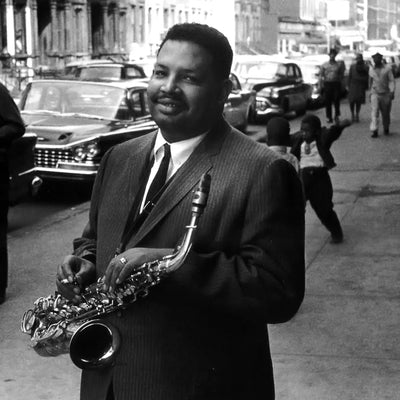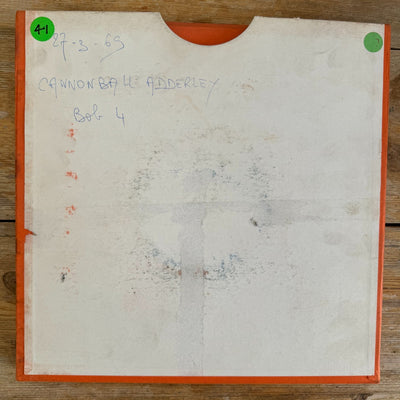


CANNONBALL ADDERLEY
Un explorateur insatiable du jazz
Tape No. 1

Tape No. 1
CANNONBALL ADDERLEY
LIVE IN PARIS 1969 • BERLIN 1972
The album brings together previously unreleased recordings from the Jazztage in Berlin (1972) and the Salle Pleyel (1969). It reveals Adderley at the height of his powers. Pieces like "Hummin'," a tribute to Charlie Parker, and "Manhã de Carnaval," enriched by Joe Zawinul's gypsy-esque piano, demonstrate his ability to fuse virtuosity and emotion.
CANNONBALL ADDERLEY
LIVE IN PARIS 1969 • BERLIN 1972

CANNONBALL ADDERLEY
LIVE IN PARIS 1969 • BERLIN 1972
The History of this Discovery
"It was in the Berlin radio archives that we discovered this 1972 recording of the Cannonball Adderley Quintet. Listening to the first notes of "Hummin'" our faces beamed with a broad smile and we even started dancing in the studio. But the length of the tapes - too short - did not allow us to consider publishing it. It was only a year later, during our trip to Stockholm, that we discovered another tape of their 1969 concert at the Paris Salle Pleyel, which was just as extraordinary. Today, we are happy to share with you this exceptional album with its absolutely fabulous music and sound!"
Frédéric D'ORIA-NICOLAS
Musical treasures seeker
THE FORMATS OF THIS DISCOVERY
Le Journal du Dimanche
“The restorations of The Lost Recordings are worthy of those devoted to master paintings”
Promising Beginnings: The Birth of a Prodigy
Julian Edwin Adderley, nicknamed “Cannonball,” was born in 1928 in Florida into a music-loving family. From a young age, he showed exceptional talent on the alto saxophone. His nickname, a playful twist on “Cannibal” due to his childhood appetite, would later come to symbolize his boundless energy and voracious musical hunger. He began his career as a music teacher before making a name for himself on the New York jazz scene in the mid-1950s, where his flamboyant technique and expressive style quickly drew attention.

Breakthrough with Miles Davis and the Rise of Hard Bop
In 1957, Adderley's career took a decisive turn when he joined Miles Davis’s legendary sextet alongside John Coltrane. Together, they recorded Milestones and the iconic Kind of Blue, both landmark albums in modern jazz. Adderley’s warm, spirited playing provided a vibrant contrast to Coltrane’s more introspective style, establishing him as a major figure in the hard bop movement. At the same time, he formed his own quintet with his younger brother, cornetist and trumpeter Nat Adderley. Their 1958 album Somethin’ Else became a masterpiece, celebrated for its formal freedom and irresistible groove.
An Eclectic Style: Jazz Meets Soul and Funk
What set Cannonball Adderley apart was his ability to bridge jazz traditions with the popular music currents of his era. He infused his work with elements of gospel, soul, and funk—most notably in “Mercy, Mercy, Mercy” (written by Joe Zawinul), which achieved widespread commercial success. Throughout the 1960s and 1970s, Adderley championed a style of jazz that was emotionally rich, socially rooted in African-American culture, and unapologetically humanistic. His performances, filled with expressive, generous playing, appealed to a wide audience far beyond the circle of jazz purists.
A living legacy
Cannonball Adderley passed away prematurely in 1975 at the age of 46, leaving behind a vibrant, generous, and deeply committed body of work. He transformed the alto saxophone into a voice of expression, struggle, and joy—combining flawless technique, infectious swing, and heartfelt sincerity. A bridge between tradition and modernity, he remains a guiding figure in jazz, remembered as much for his open-mindedness as for his talent. His legacy continues to inspire jazz, funk, and soul musicians who see in him a model of creativity, generosity, and freedom.
"Understanding is the least important thing when it comes to appreciating jazz, because, like everything else, jazz is a form of entertainment. It’s meant to be enjoyed, not understood like a technical blueprint."
OUR HAPPY MUSIC LOVERS

